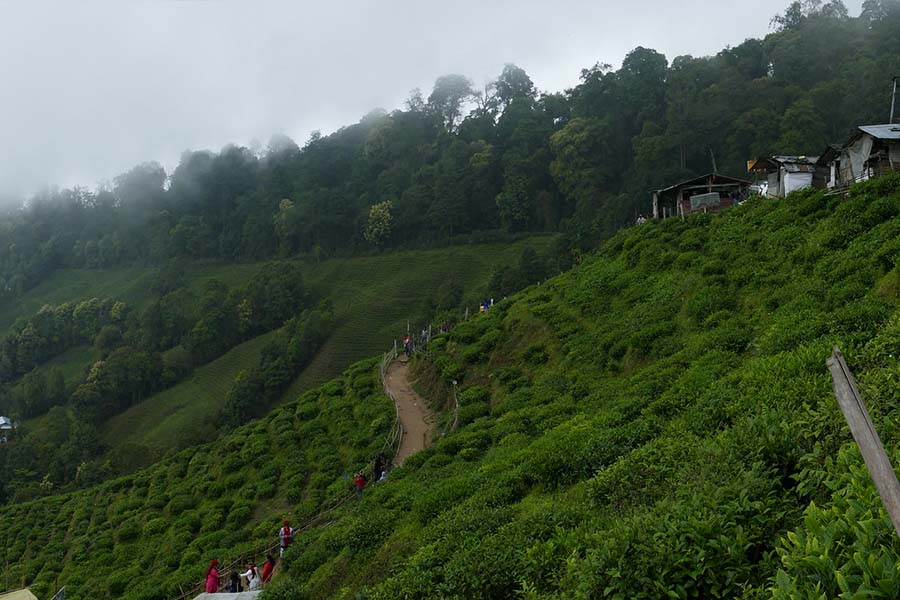Ranthambore National Park – Safari Experience, Zones, Attractions

Ranthambore National Park, nestled in the Sawai Madhopur district of Rajasthan, is a wildlife enthusiast’s paradise. Famous for its thriving tiger population, this park offers a unique blend of history, nature, and adventure. Whether you’re a wildlife photographer, a nature lover, or just someone looking for an escape into the wild, Ranthambore provides an unforgettable experience. This guide will take you through everything you need to know about visiting this iconic park.
Introduction to Ranthambore National Park
Ranthambore National Park, one of the largest and most renowned national parks in India, spans an area of 1,334 square kilometers. Established as a game sanctuary in 1955, it became a national park in 1980. Known for its diverse wildlife, especially the Bengal tiger, the park attracts thousands of visitors every year.
History and Significance
Ranthambore’s history is as fascinating as its wildlife. The park surrounds the historic Ranthambore Fort, which dates back to the 10th century. The fort was once a royal hunting ground for the Maharajas of Jaipur. In 1973, Ranthambore became part of Project Tiger, a conservation program aimed at protecting tigers in India. This initiative played a crucial role in preserving the park’s tiger population, making it a key location for tiger conservation.
Flora and Fauna in Ranthambore
Ranthambore boasts a rich variety of flora and fauna. The park’s dry deciduous forests are home to a diverse range of plant species, including Dhok, Banyan, and Pipal trees. The landscape also features grasslands, lakes, and rocky ridges, providing varied habitats for wildlife.
- Tigers: The main attraction of Ranthambore is undoubtedly its Bengal tigers. These majestic predators can often be seen roaming the park, especially near water bodies.
- Leopards: Though elusive, leopards also inhabit the park, often seen in the less frequented zones.
- Other Wildlife: Ranthambore is home to a variety of other animals, including sloth bears, hyenas, jackals, deer, and various species of reptiles.
- Birdlife: The park is a birdwatcher’s delight with over 300 species of birds, including the crested serpent eagle, Indian skimmer, and painted stork.
Best Time to Visit
The best time to visit Ranthambore National Park is between October and June. During this period, the weather is pleasant, and the chances of spotting tigers and other wildlife are high. The park remains closed during the monsoon season, from July to September, to allow the environment to rejuvenate.
How to Reach Ranthambore
Reaching Ranthambore is convenient, whether by air, rail, or road:
- By Air: The nearest airport is Jaipur International Airport, located about 160 kilometers away. From Jaipur, you can hire a taxi or take a bus to Ranthambore.
- By Rail: Sawai Madhopur Railway Station, just 11 kilometers from the park, is the closest railway station. It is well-connected to major cities like Delhi, Mumbai, and Jaipur.
- By Road: Ranthambore is easily accessible by road from nearby cities. Regular bus services and taxis are available from Jaipur, Delhi, and other cities in Rajasthan.
Safari Experience in Ranthambore
A safari in Ranthambore offers an exhilarating experience of spotting wildlife in their natural habitat. The park offers both Jeep and Canter safaris, with each providing a unique way to explore the wilderness.
- Jeep Safari: Ideal for smaller groups, the Jeep safari allows for a more personalized and immersive experience. The open Gypsy vehicles navigate through narrow trails, bringing you closer to the wildlife.
- Canter Safari: The Canter safari, accommodating up to 20 people, is perfect for larger groups. It covers broader areas of the park, offering a good chance of wildlife sightings.
Zones of Ranthambore National Park

Ranthambore is divided into 10 zones, each with its unique terrain and wildlife sightings. Zones 1 to 5 are considered the best for tiger sightings, while the remaining zones also offer great opportunities to spot other wildlife.
- Zone 1: Known for its rocky terrain and water bodies, Zone 1 is a great place to spot tigers, especially T-39, also known as “Noor.”
- Zone 2: A popular zone with frequent tiger sightings, including T-24 or “Ustaad,” who once ruled this area.
- Zone 3: This zone includes the famous Rajbagh Lake, a favorite spot for tigers and other wildlife to gather.
- Zone 4: Known for its dense forest and hills, Zone 4 is home to several tigers, including the iconic T-19 or “Krishna.”
- Zone 5: Similar to Zone 4, this area offers excellent tiger sighting opportunities, particularly around the Kachida Valley.
Top Attractions in Ranthambore

Besides wildlife, Ranthambore offers several other attractions:
- Ranthambore Fort: This UNESCO World Heritage Site provides panoramic views of the park and is steeped in history.
- Padam Talao: The largest lake in Ranthambore, Padam Talao, is often frequented by tigers and other animals. The famous Jogi Mahal lies at the edge of this lake.
- Kachida Valley: Located in the outskirts of the park, this valley is known for its leopard and sloth bear sightings.
- Trinetra Ganesh Temple: Located within the Ranthambore Fort, this ancient temple is dedicated to Lord Ganesha and attracts many devotees.
Where to Stay in Ranthambore
Ranthambore offers a range of accommodation options to suit every budget:
- Luxury Resorts: For those seeking a lavish experience, several luxury resorts offer top-notch amenities, including private safaris, spa services, and gourmet dining.
- Mid-Range Hotels: Mid-range hotels provide comfortable stays with good facilities, perfect for families and small groups.
- Budget Lodges: Budget travelers will find a variety of lodges and guesthouses that offer basic amenities and a cozy stay.
Photography Tips for Ranthambore

Capturing the beauty of Ranthambore requires some preparation:
- Use a Telephoto Lens: A telephoto lens (200-400mm) will help you capture distant wildlife, especially tigers.
- Be Patient: Wildlife photography requires patience. Wait quietly, and you’ll be rewarded with some incredible shots.
- Early Morning and Late Afternoon: These times offer the best lighting conditions and the highest chances of wildlife sightings.
- Keep Your Camera Ready: Wildlife sightings can happen in an instant. Always keep your camera ready to capture the moment.
Conservation Efforts and Challenges
Ranthambore plays a crucial role in tiger conservation, but it faces several challenges:
- Human-Wildlife Conflict: As villages surround the park, conflicts between humans and wildlife occasionally occur, leading to challenges in conservation efforts.
- Poaching: Although greatly reduced, poaching still poses a threat to the park’s wildlife.
- Tourism Pressure: The increasing number of tourists can strain the park’s resources, making sustainable tourism practices essential.
Travel Tips for Ranthambore
- Book Safaris in Advance: Safaris are in high demand, especially during peak season. Book your safari well in advance to secure your spot.
- Respect the Wildlife: Maintain a safe distance from animals and do not disturb them.
- Carry Essentials: Bring essentials like water, sunscreen, a hat, and binoculars for a comfortable safari experience.
- Follow Park Rules: Adhere to all park rules, including the ban on plastic, to help preserve the environment.
Conclusion
Ranthambore National Park is more than just a destination; it’s an adventure into the heart of nature. The thrill of spotting a tiger, the serenity of the lakes, and the historical charm of the fort combine to create an unforgettable experience. Whether you’re visiting for the wildlife or the history, Ranthambore promises a journey filled with wonder and discovery.
FAQs
What should I bring for a safari? Essentials include a camera, binoculars, water, sunscreen, and a hat.
What is the best time to visit Ranthambore National Park? October to June offers pleasant weather and high wildlife sightings.
How can I book a safari? Book online via the official Rajasthan tourism website or through authorized tour operators.
Are there restrictions for photography? Photography is allowed, but follow park guidelines and get a permit for professional use.
Can I visit Ranthambore Fort during the safari? Yes, it’s accessible on certain safari routes for its views and historical significance.


